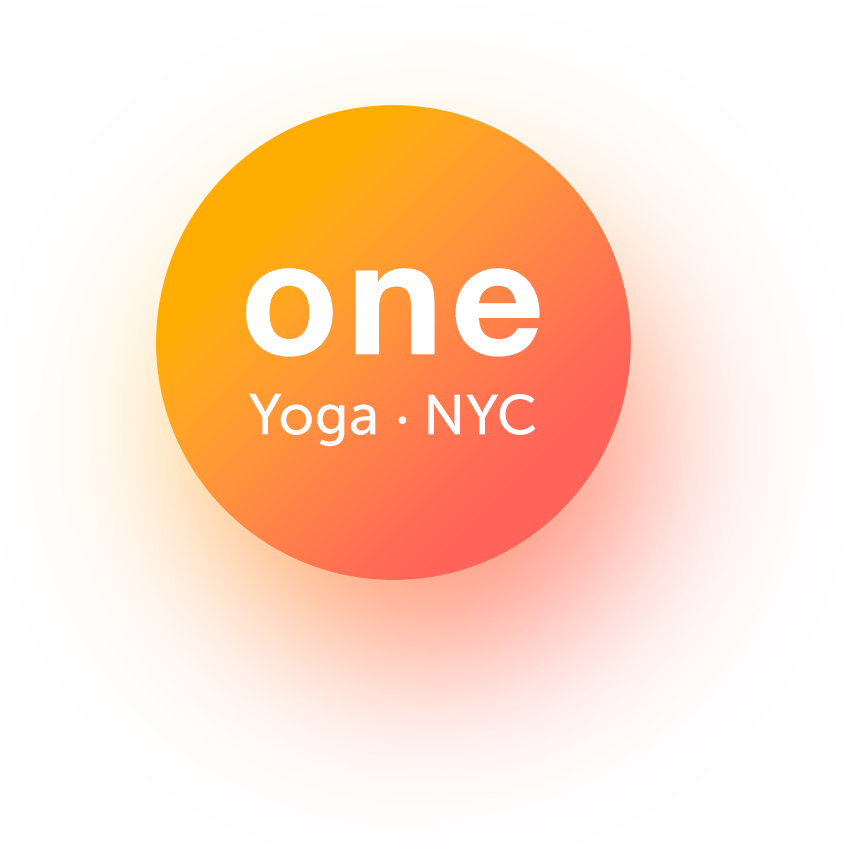oneyoganyc@gmail.com
NY,NY 121 Fulton Street
NY,NY 121 Fulton Street
Basics of Meditation
The main benefit of meditation practice - this is a real opportunity to change your life for the better.
There are more than 3,000 studies confirming the benefits of meditation for a person, the state of his body and life in general. Many modern clinics prescribe meditation to their patients to help cope with the pain of migraines, arthritis, chronic fatigue, heart and many other diseases. From the point of view of science, regular meditation classes directly affect the feeling of happiness, help to stay in good shape and cope with stress.
How to master meditation? Where to start and what to pay attention to? The answers to these questions and their recommendations are given by the specialists of the Studio ONE YOGA NYC.
There are more than 3,000 studies confirming the benefits of meditation for a person, the state of his body and life in general. Many modern clinics prescribe meditation to their patients to help cope with the pain of migraines, arthritis, chronic fatigue, heart and many other diseases. From the point of view of science, regular meditation classes directly affect the feeling of happiness, help to stay in good shape and cope with stress.
How to master meditation? Where to start and what to pay attention to? The answers to these questions and their recommendations are given by the specialists of the Studio ONE YOGA NYC.

What is meditation?
Modern science understands by this various psychophysiological practices (religious or wellness) that allow you to make consciousness clearer, learn to control your mind.
Many schools and instructors distinguish meditation into a separate, independent direction, which almost magically allows you to open up new worlds.
This is partly true – meditation makes it possible to work with the mind, see things more clearly and stay more in the present. But it is equally important to understand that it is a part of yoga, its highest level to achieve.
In Ashtanga yoga there is such an important component as dhyana (Skt. dhyna – contemplation, concentration) - a special art to gain power over consciousness.
Ashtanga yoga includes eight elements:
In order to reach the highest level, it is important to adhere to these rules, the main purpose of which is the development of the personality itself. The higher a person's demands on himself, the higher his spiritual development, the more his meditation process will be productive, and not be reduced to a struggle with himself against falling asleep or a flood of surging thoughts.
Modern science understands by this various psychophysiological practices (religious or wellness) that allow you to make consciousness clearer, learn to control your mind.
Many schools and instructors distinguish meditation into a separate, independent direction, which almost magically allows you to open up new worlds.
This is partly true – meditation makes it possible to work with the mind, see things more clearly and stay more in the present. But it is equally important to understand that it is a part of yoga, its highest level to achieve.
In Ashtanga yoga there is such an important component as dhyana (Skt. dhyna – contemplation, concentration) - a special art to gain power over consciousness.
Ashtanga yoga includes eight elements:
- yama is the first stage, moral relations with the outside world, not causing physical and moral harm to other living beings,
- niyama is your relationship with yourself, inner purity and self–control,
- asana is physical exercises that promote harmony of mind and body,
- pranayama is breathing practices that teach you to control prana – "vital energy"
- pratyahara is the practice of disidentifying the senses and the objects to which they are directed,
- dharana is concentration, purposeful concentration of the mind,
- dhyana is meditation (inner activity that gradually leads to samadhi),
- samadhi is the highest stage, Bliss, Self realization.
In order to reach the highest level, it is important to adhere to these rules, the main purpose of which is the development of the personality itself. The higher a person's demands on himself, the higher his spiritual development, the more his meditation process will be productive, and not be reduced to a struggle with himself against falling asleep or a flood of surging thoughts.
Basics of Meditation for beginners
Taking the first step in yoga it is important to understand that meditation is a lot of different practices, but its basic rules have remained unchanged for many centuries.
One of the main ones is accessibility. Meditation classes aimed at giving time
primarily to your mind and mindfulness practice are available to everyone. Neither gender, nor age, nor place of residence, nor level of abilities matter here. The main thing is your desire.
The second important point is that you do not need any expensive equipment or special clothes for classes ссылка на статью блога за январь 23. If you have mastered the techniques, you can meditate anywhere and at any time. For many beginners to comprehend the basics of meditation, it is worth paying attention first of all to the fact that this practice is aimed at connecting with oneself, it is the processing of emotions and thoughts, the development of a sense of self-awareness and the improvement of mental and physical health.
Taking the first step in yoga it is important to understand that meditation is a lot of different practices, but its basic rules have remained unchanged for many centuries.
One of the main ones is accessibility. Meditation classes aimed at giving time
primarily to your mind and mindfulness practice are available to everyone. Neither gender, nor age, nor place of residence, nor level of abilities matter here. The main thing is your desire.
The second important point is that you do not need any expensive equipment or special clothes for classes ссылка на статью блога за январь 23. If you have mastered the techniques, you can meditate anywhere and at any time. For many beginners to comprehend the basics of meditation, it is worth paying attention first of all to the fact that this practice is aimed at connecting with oneself, it is the processing of emotions and thoughts, the development of a sense of self-awareness and the improvement of mental and physical health.
Theory and practice
At first, even the simplest meditation for beginners seems somewhat strange.
However, it is important to understand first of all its essence – stopping the thought process. Different practices lead to this in different ways, but all are aimed at working with consciousness, at being able to expand its boundaries without using any means.
The easiest way to start regular practice is under the guidance of a teacher. This gives you the opportunity to focus and make it easier to go through the first few difficult steps. For example, many beginners are lost in the questions of how to do properly: practice meditation before yoga or after, is it better to do it in the evening or in the morning. It is easier to get answers to these questions from a teacher who will guide you.
ONE YOGA NYC Studio experts recommend starting meditation through the
practice of asanas. To master yoga poses, an important condition is to focus on a part of the body. Therefore, the first steps in the study of asanas will also be an opportunity to learn how to concentrate attention, plunging into the inner world.
An equally significant way is to concentrate on breathing, when in the process of performing asanas all attention is directed to breathing. Mastering this stage becomes important for the practice of pranayama – the ability to control breathing. This is the stage that precedes meditation directly.
Specialists pay attention to the importance of concentration, because without the ability to concentrate on something, for example, on an object or awareness of yourself, or your thought process, it is quite difficult to go beyond your own feelings and thoughts. Therefore, it is important to focus on one thing. And performing asanas with the need to concentrate is a great start for the next step – deep meditation.
By the way, often most beginners do not even realize that practicing yoga in a group with the breathing of ujaya, as it is practiced, for example, in Vinyasa yoga, is already a meditative practice.
At first, even the simplest meditation for beginners seems somewhat strange.
However, it is important to understand first of all its essence – stopping the thought process. Different practices lead to this in different ways, but all are aimed at working with consciousness, at being able to expand its boundaries without using any means.
The easiest way to start regular practice is under the guidance of a teacher. This gives you the opportunity to focus and make it easier to go through the first few difficult steps. For example, many beginners are lost in the questions of how to do properly: practice meditation before yoga or after, is it better to do it in the evening or in the morning. It is easier to get answers to these questions from a teacher who will guide you.
ONE YOGA NYC Studio experts recommend starting meditation through the
practice of asanas. To master yoga poses, an important condition is to focus on a part of the body. Therefore, the first steps in the study of asanas will also be an opportunity to learn how to concentrate attention, plunging into the inner world.
An equally significant way is to concentrate on breathing, when in the process of performing asanas all attention is directed to breathing. Mastering this stage becomes important for the practice of pranayama – the ability to control breathing. This is the stage that precedes meditation directly.
Specialists pay attention to the importance of concentration, because without the ability to concentrate on something, for example, on an object or awareness of yourself, or your thought process, it is quite difficult to go beyond your own feelings and thoughts. Therefore, it is important to focus on one thing. And performing asanas with the need to concentrate is a great start for the next step – deep meditation.
By the way, often most beginners do not even realize that practicing yoga in a group with the breathing of ujaya, as it is practiced, for example, in Vinyasa yoga, is already a meditative practice.

Practical benefit
The results of regular meditative practice are always beneficial for the human body and psyche. A lot of studies confirm that at the physical level they have a noticeable effect on human health:
Many doctors recommend meditation to help patients cope with pain in diseases of the cardiovascular system, diabetes and arthritis. Practices also help to get rid of chronic fatigue and prevent the development of multiple sclerosis.
Studies show that meditation has a positive effect on the neuroplasticity of the brain and an increase in the concentration of gray matter. It has been scientifically proven
that people over the age of 50 who practice meditation regularly have a brain that "looks" seven years younger.
Meditation is especially important for "unloading the brain" and strengthening the nervous system:
It is important to understand that the meaning of meditation is not to separate a person from the real world, but on the contrary, to make him stronger, less vulnerable to situations that arise in the surrounding world.
The results of regular meditative practice are always beneficial for the human body and psyche. A lot of studies confirm that at the physical level they have a noticeable effect on human health:
- help hypertensive patients by reducing high blood pressure,
- help to reduce the level of lactic acid in the blood, relieve anxiety,
- relieve migraines,
- remove painful sensations in muscles and joints, relieve tension,
- help strengthen the immune system.
Many doctors recommend meditation to help patients cope with pain in diseases of the cardiovascular system, diabetes and arthritis. Practices also help to get rid of chronic fatigue and prevent the development of multiple sclerosis.
Studies show that meditation has a positive effect on the neuroplasticity of the brain and an increase in the concentration of gray matter. It has been scientifically proven
that people over the age of 50 who practice meditation regularly have a brain that "looks" seven years younger.
Meditation is especially important for "unloading the brain" and strengthening the nervous system:
- it helps to get rid of stress, depression,
- helps to improve sleep, get rid of insomnia,
- increases intellectual abilities, improves memory,
- thanks to regular meditation classes, for example, Mindfulness meditation
- beginners learn to more accurately understand their own goals and make the right decisions.
It is important to understand that the meaning of meditation is not to separate a person from the real world, but on the contrary, to make him stronger, less vulnerable to situations that arise in the surrounding world.
You can sign up for meditation classes for beginners in New York City at ONE
YOGA NYC Studio. Experienced teachers will teach you how to meditate correctly – to abstract from the everyday hustle and bustle and concentrate on the most important things in present moment. Based on personal experience and guided by the recommendations of leading experts in this field, we will help you master meditation practices that will suit everyone.
Come to our yoga and meditation classes – this will definitely open up the
opportunity for you to take a different look at any problem and get to know your own inner world.
YOGA NYC Studio. Experienced teachers will teach you how to meditate correctly – to abstract from the everyday hustle and bustle and concentrate on the most important things in present moment. Based on personal experience and guided by the recommendations of leading experts in this field, we will help you master meditation practices that will suit everyone.
Come to our yoga and meditation classes – this will definitely open up the
opportunity for you to take a different look at any problem and get to know your own inner world.


